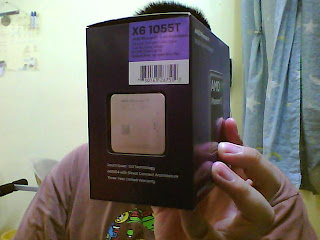AMD Ships Llano Samples to Customers, Plans to Initiate Production in Late 2010. AMD: We Have Samples of Llano and Ontario Now
[04/15/2010 11:20 PM]
by Anton Shilov
Advanced Micro Devices, the world’s second largest maker of microprocessors, said that it had obtained sampled of its Fusion family of products – code-named Llano and Ontario – and that production of certain chips with integrated graphics will begin already in late 2010, which means that at least Llano chips are on-track for launch in early 2011.[04/15/2010 11:20 PM]
by Anton Shilov
Llano Samples Shipping to Customers, Ontario Samples Available Internally
“We plan to commence volume production in the back half of this year. We do now have internal samples of both of our initial Fusion designs, we are learning quite a lot, and are quite happy with what we see, and we started sampling to select customers, one of those two designs,” said Dirk Meyer, chief executive officer and president of AMD, during the quarterly conference call with financial analysts.The two Fusion products Mr. Meyer talked about are Llano, which is aimed at various notebooks, including low-power and high-end; as well as Ontario, which is designed for various ultra low-voltage devices, such as netbooks, tablets and so on.
AMD Llano: AMD Phenom II + ATI Radeon HD 5000
Quite a lot is known about Llano processor, which is a part of Sabine platform. As reported earlier, AMD Llano accelerated processing unit (APU) will have four x86 cores based on the current micro-architecture each of which will have 9.69mm² die size (without L2 cache), a little more than 35 million transistors (without L2 cache), 2.5W – 25W power consumption, 0.8V – 1.3V voltage and target clock-speeds at over 3.0GHz clock-speed. The cores will dynamically scale their clock-speeds and voltages within the designated thermal design power in order to boost performance when a program does not require all four processing engines or trim power consumption when there is no demand for resources. According to sources familiar with the matter, different versions of Llano processor will have thermal design power varying from 20W to 59W: high-end dual-core, triple-core and quad-core chips will have TDP between 35W and 59W; mainstream chips with two of four x86 cores will fit into 30W thermal envelope and low-power dual-core Llano chips will have 20W TDP. Llano will be made using 32nm SOI process technology.AMD Sabine platform will also include code-named Hudson input/output controllers that will support PCI Express graphics port, 16 USB ports, USB 3.0 support (Hudson M3 only), 6 Serial ATA ports with RAID support, 1Gb Ethernet, integrated video DAC, integrated clock-generator and so on. Besides, Sabine may also feature optional Vancouver-series graphics processing units.
AMD Bobcat: New Micro-Architecture + DirectX 11 Graphics
Much less is known about AMD’s code-named Ontario product, which is a part of Brazos platform. According to AMD, Bobcat chips will feature x86-64, virtualization, SSE, SSE2, SSE3 technologies and will be single-threaded with out-of-order execution. The actual Ontario microprocessor, which is a dual-core chip, will be able to offer 90% of today’s “mainstream performance” in less than half of die area. AMD claims that Bobcat-based products are sub-1W capable, hence, such chips will be able to address products in various form-factors, including slate-type PCs. AMD also says that AMD Ontario solutions are single-chip products.“[Bobcat] is the brand new x86 micro-architecture, which first appears in the Ontario product which we talked about in the analyst conference. The Ontario product is really focused on, I’ll call it value PCs and netbooks, but the Bobcat technology and other technologies that we have in house are appropriate for lower power envelopes [and products like] pads. You’ll see Bobcat-based products show up the following year [in] these market segments,” said Mr. Meyer.
Source: X-bit Labs




